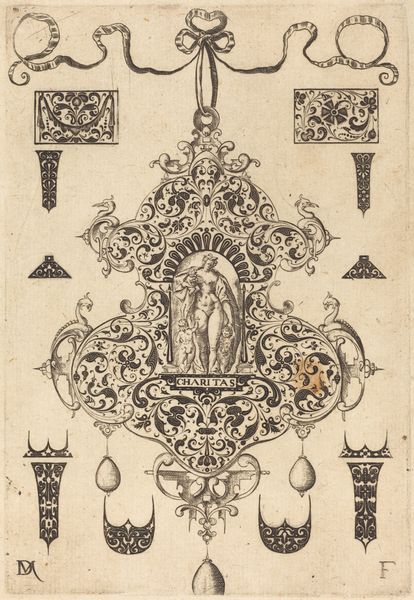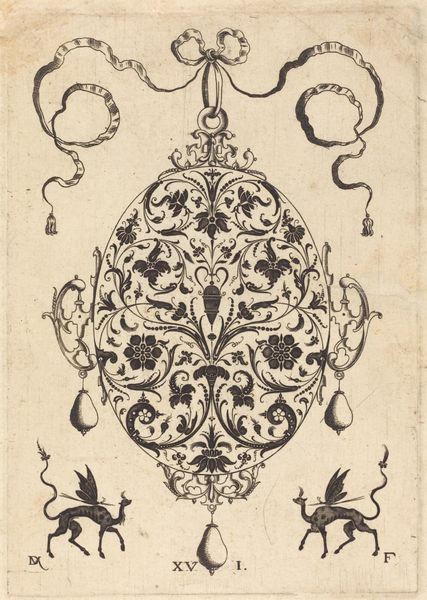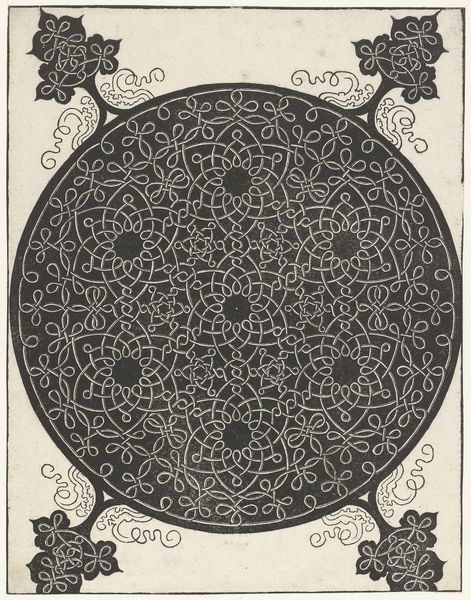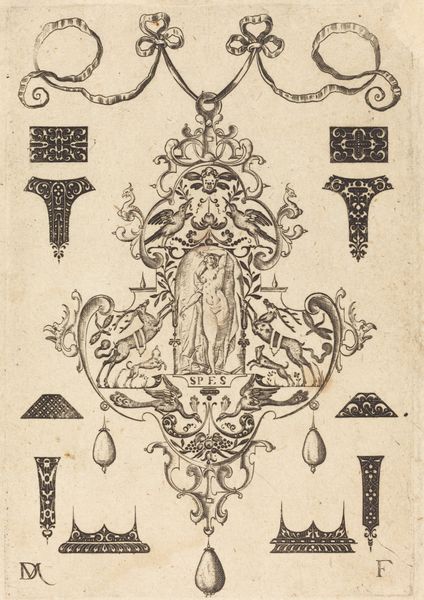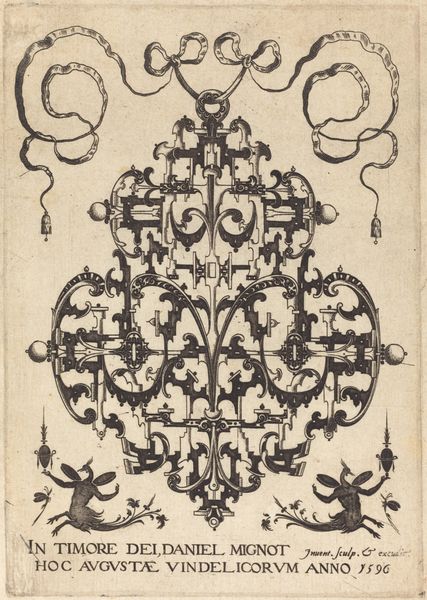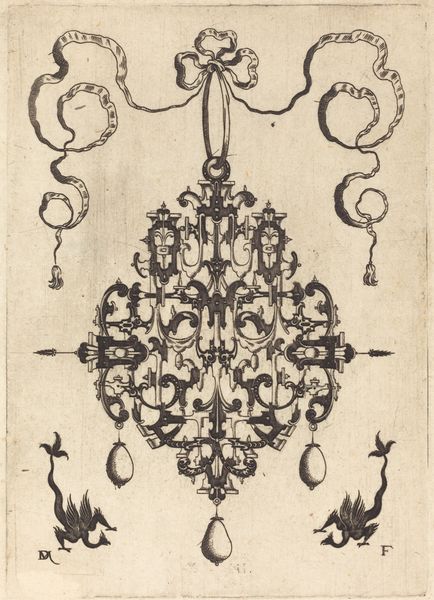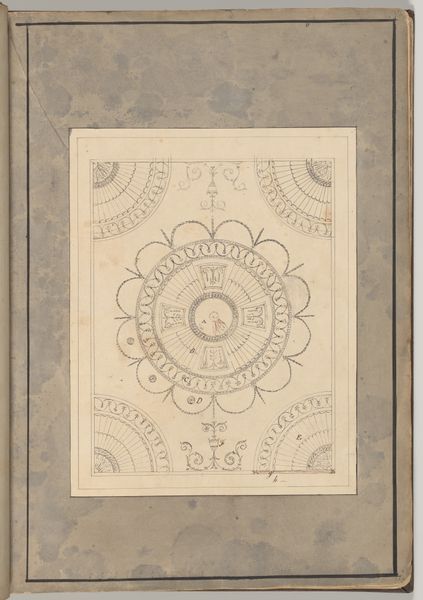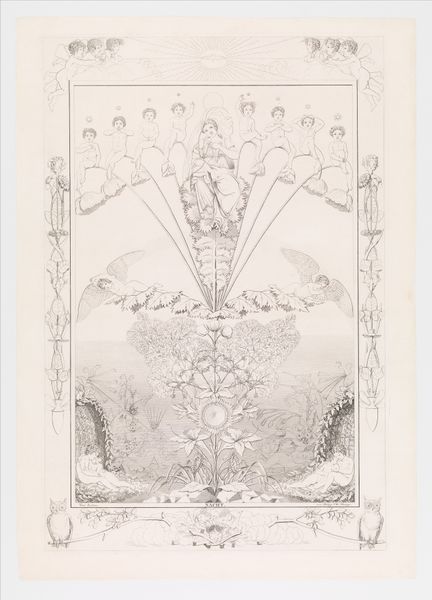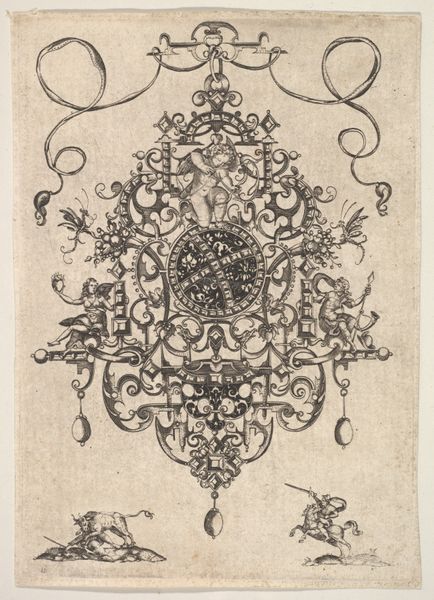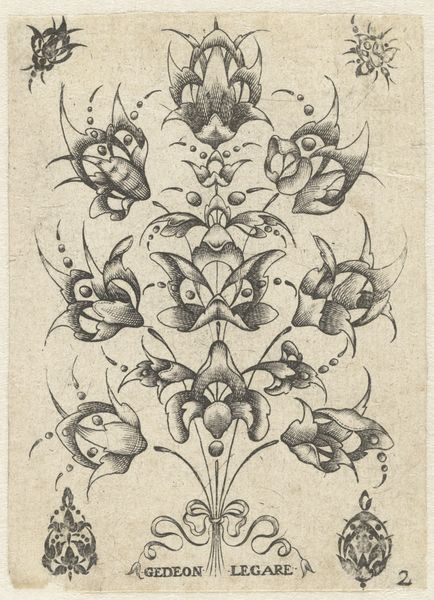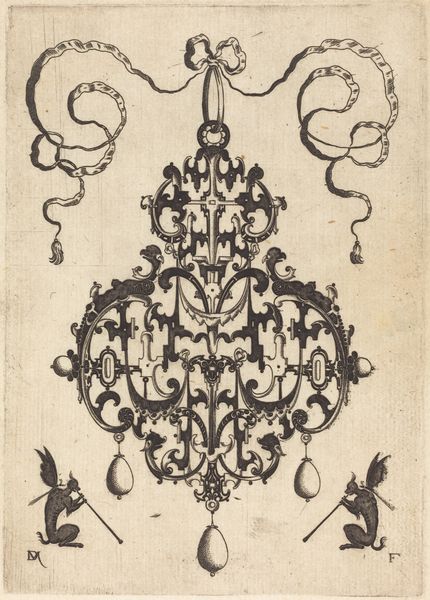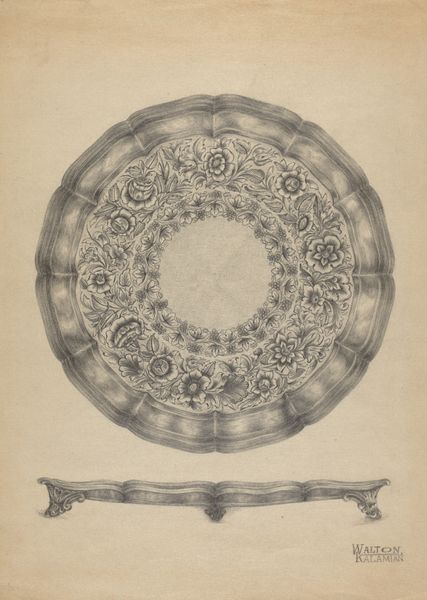
Design for a Ceiling, an Oblong with an Oval Center 1743 - 1796
0:00
0:00
drawing, print, engraving, architecture
#
drawing
#
neoclassicism
# print
#
geometric
#
decorative-art
#
engraving
#
architecture
#
rococo
Dimensions: sheet: 13 3/8 x 21 5/8 in. (34 x 55 cm)
Copyright: Public Domain
Curator: Let’s consider this design for a ceiling by Sir William Chambers, likely created between 1743 and 1796. The work employs engraving, drawing, and printmaking techniques and can be seen at the Metropolitan Museum. Editor: It evokes a sense of opulent nostalgia. The delicate linework and symmetrical design point to a bygone era of grand halls and aristocratic gatherings. There is also something slightly unsettling about a past when that kind of grandeur felt both inaccessible and naturalized. Curator: Exactly. Works like this, deeply embedded in neoclassicism and rococo styles, often naturalized hierarchies of power through carefully curated visual environments. Ornamentation served a purpose— reinforcing class and control. We see this in how spaces were divided and visually articulated. Who got access, and how they were meant to behave within that space, are communicated in architectural features. Editor: That’s astute. Thinking of it structurally, the symmetry and placement of symbolic objects really codify an expected worldview. Even something like the garlands are doing cultural work beyond being pretty. They’re invoking traditions, heritage— legitimizing power. The eye is led towards an ideal of harmony and order, but only if one accepts the premises built into the very design. Curator: Yes. The symbolic lexicon—from the floral motifs to the geometric precision—creates an artificial ideal. It is removed from the daily experiences of all those who aren’t part of a very exclusive set of circumstances. Editor: Thinking about that iconography, I wonder if there are repeated symbols that would indicate the patron’s specific aspirations. For example, if the weaponry is simply decorative, or if they carry coded information about an actual person, historical moment, or even something allegorical regarding power or conquest. Curator: And in what ways are they deployed in this context, either subverting expectations or reifying tradition, to influence perceptions and reinforce ideologies? It also makes me wonder—given Chambers’ history of institutional power— whose symbolic vocabularies he’s elevating here. Editor: Examining such architectural design offers insights beyond aesthetics; it unveils how spaces themselves encode social values and hierarchies, even to this day. Curator: Absolutely. And by recognizing this we can approach current architecture with more critical awareness.
Comments
No comments
Be the first to comment and join the conversation on the ultimate creative platform.


